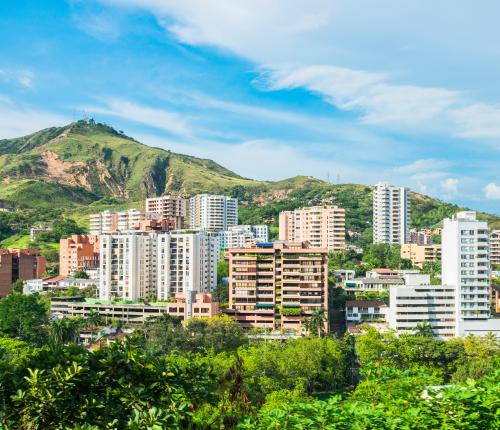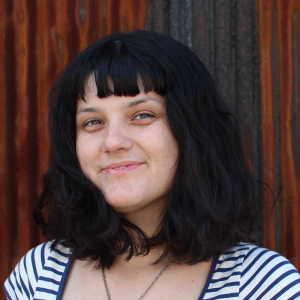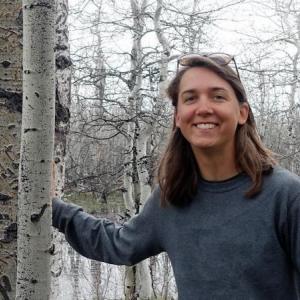
Co-Design of Technology for Tribal Environmental Stewardship
Connecting tools to people and people to their environment
The Problem
Wildlife populations have dropped by 69% in the past fifty years, and the decline is only accelerating. In
the face of climate change, this loss of biodiversity will lead to the irreversible loss of ecosystem health
and presents an existential challenge to the future of life on Earth as we know it.
The Opportunity
We are now witnessing unprecedented efforts to conserve, connect, and protect large areas of land.
In late 2022, the global community came together at the United Nations Biodiversity Conference to
boldly commit to a plan to halt and reverse nature loss. At the United Nations Biodiversity Conference in 2024 over 190 countries are convening to assess progress towards global conservation targets. These goals created conditions that could unlock
the flow of billions of dollars to those managing and conserving biodiversity.
However, those responsible for the future of the lionshare of the planet’s biodiversity are all too
often excluded from access to these potentially transformative investments. Indigenous People are
responsible for the protection of 80% of global biodiversity. Just forms of collaboration with Tribal
communities can help co-develop tools that allow these Tribes to engage as power players in this new
global movement for biodiversity conservation.
Our Vision
With this project, we seek to develop tangible data science approaches and AI tools co-designed with a
partner Tribe that is at the forefront of wildlife conservation. Moving forward, we aim to extend this work
beyond a single Tribe and increase the capacity of Indigenous Environmental Stewardship.

Where We Are Now
Going Global: The United Nations Biodiversity Conference (COP16) in 2024 was a critical opportunity to assess progress towards the biodiversity conservation targets set in the Kunming-Montreal Global Biodiversity Framework. DSE hosted a side event at COP16 to unite conversation and illuminate our work at the intersection of TEK, environmental conservation, data science and AI, and Indigenous data sovereignty. More details here.
We are also helping form a working group around AI and Indigenous Data Sovereignty:
Responsible Use for Biodiversity Monitoring. Please reach out if this aligns with your work.
Collaboration with Defined Group: Better tools and technology are only part of the solution. Here at Schmidt DSE, we are focusing on working directly with Tribes to put these tools into the hands of the people who can make a difference. Our goal is to connect tools to people and people to their environment. We’ve partnered with an Indigenous Tribe in Northern California, who have developed a vast array of wildlife monitoring practices and data. The Tribe’s Wildlife team are keen to amplify their work by leveraging emerging, state-of-the-art data science practices. We are currently co-designing a suite of technological tools to better enable their team to make decisions on wildlife conservation interventions.
We are particularly focused on the production of two interrelated tools for the Tribes Wildlife Team:
- An AI-powered visualization tool to help the Tribe’s team parse and better understand biodiversity data using a camera trap array distributed across their Ancestral Territory.
- A broader data infrastructure and platform to ingest and efficiently process a full suite of biodiversity insights collected by the Tribe in a fashion that protects their autonomy over the data, while giving them more power to engage in conversations ranging from elk harvest quotas to fire management.
Where We Are Going
Wider Impact: The biodiversity monitoring network we are collaborating on is just one example from hundreds of other Tribes taking on similar projects. The challenges of facilitating data training and open data collaboration while maintaining data sovereignty, privacy, and accessibility also apply to these other Tribe’s work. Our goal is to scale the work we are doing to other Tribes building wildlife monitoring networks for environmental conservation. In order to achieve this goal we must co-design with the wider Indigenous communities.
Relationship and Trust building: In order to facilitate the co-design process and ensure that the work we do is not redundant with other efforts, we have extensively mapped out the current work being done in this space. We are in conversation with other Tribal networks to form collaborations on future projects. Through this work, we have further defined a vital role Schmidt DSE will play in acting as a connector to these groups. In the new year we will continue this work in building trust with our existing relationships and extending collaborations, highlighting our vision for increasing the capacity of Indigenous Environmental Stewardship practices.
Products Focus: We have begun working with our partners on two areas which will be utilized by the wider Indigenous environmental community.
- A data infrastructure library and template to efficiently store and query sensor data for monitoring wildlife.
- A white paper, toolbox, and accompanying communications which break down sovereignty, ownership, and licensing for Tribes working with and developing data pipelines and AI models.








